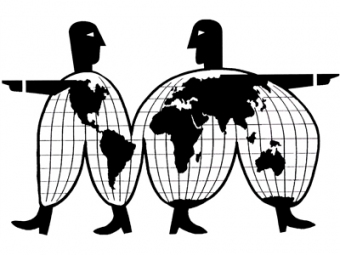Surge of the ‘Second World’
The National Interest |

By Parag Khanna
THE OLD Order no longer qualifies as an order. The term “world order” denotes a stable distribution of power across the world. But power concentration today is in a state of tremendous flux, characterized by rapid diffusion and entropy toward a broad set of emerging powers that now share the regional and global stage. Western-centered multilateralism represents at best a partial component of a world system that is increasingly fragmented.
Nostalgia for the post–World War II or post–Cold War periods will not affect this picture. At those junctures, America had an opportunity to fashion a new world order. After World War II, America capitalized on this moment; after the Cold War, it squandered it. The world has moved beyond even the assumptions embedded in President George H. W. Bush’s famous “new world order” speech to a joint session of Congress two decades ago in which he envisioned a unipolar order managed through a multilateral system. Instead, the world has quickly become multipolar, institutionally polycentric and even “multiactor,” meaning nonstate groups such as corporations and NGOs are commanding more and more influence on key issues. This trend seems irreversible, and it needs to be digested before any kind of new global-governance mechanism can be formulated, with or without American leadership.
One leading contributor to the demise of the Old Order has been the so-called rising powers such as China, India, Russia and Brazil. These states increasingly serve as anchors of regional order and also wield influence beyond their immediate neighborhoods. By most measures, China is already a superpower; its presence is factored into diplomatic, economic and strategic decisions by nearly all countries worldwide. India, Brazil and Russia lag behind China, but it’s a reality of geopolitics that states do not need to forge new systems of order to undermine the existing one.
Parag Khanna is a senior research fellow at the New America Foundation and director of the Hybrid Reality Institute. His most recent book is How to Run the World: Charting a Course to the Next Renaissance (Random House, 2011).